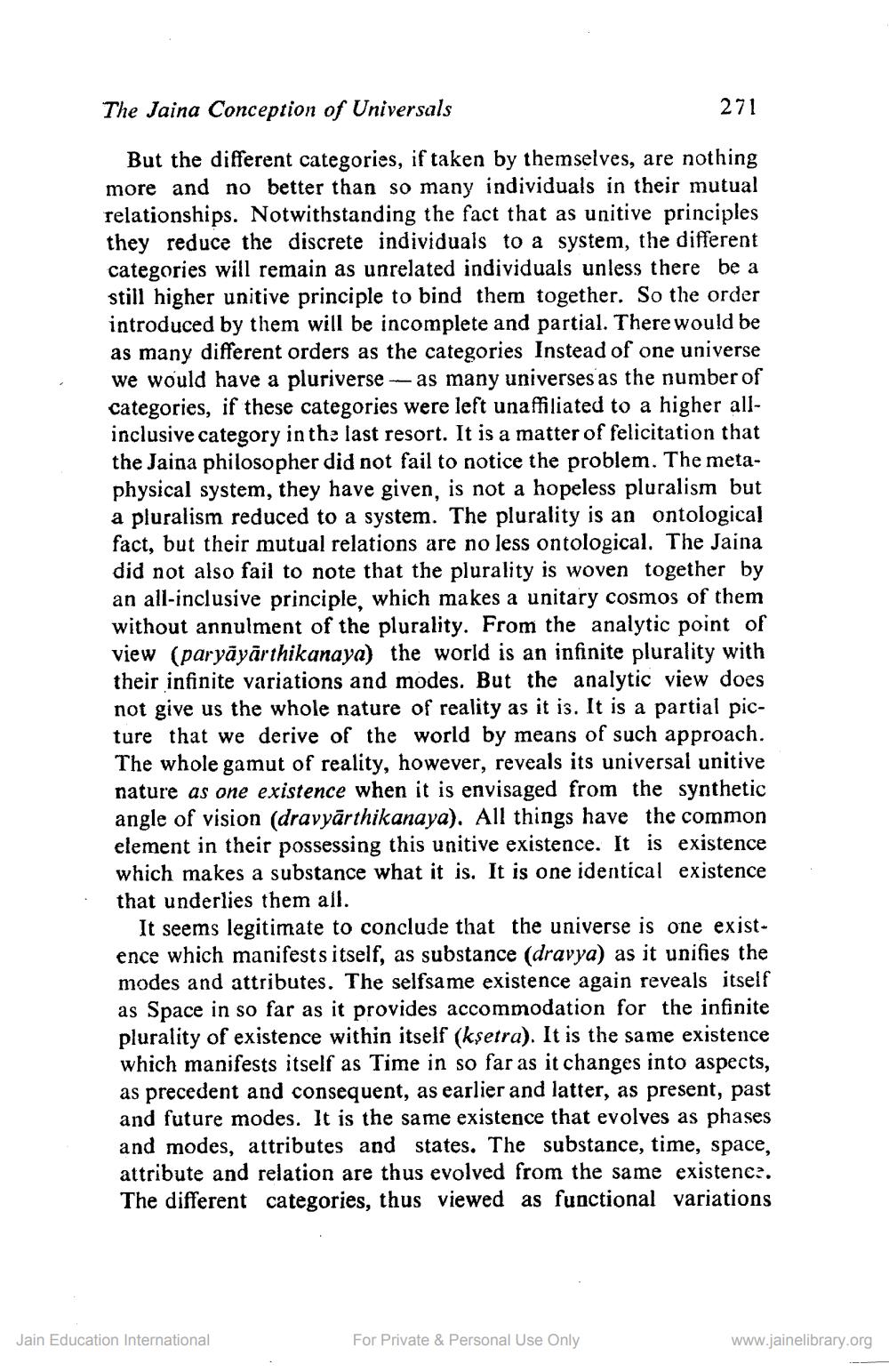________________
The Jaina Conception of Universals
271
But the different categories, if taken by themselves, are nothing more and no better than so many individuals in their mutual relationships. Notwithstanding the fact that as unitive principles they reduce the discrete individuals to a system, the different categories will remain as unrelated individuals unless there be a still higher unitive principle to bind them together. So the order introduced by them will be incomplete and partial. There would be as many different orders as the categories Instead of one universe we would have a pluriverse - as many universes as the number of categories, if these categories were left unaffiliated to a higher allinclusive category in the last resort. It is a matter of felicitation that the Jaina philosopher did not fail to notice the problem. The metaphysical system, they have given, is not a hopeless pluralism but a pluralism reduced to a system. The plurality is an ontological fact, but their mutual relations are no less ontological. The Jaina did not also fail to note that the plurality is woven together by an all-inclusive principle, which makes a unitary cosmos of them without annulment of the plurality. From the analytic point of view (paryāyārthikanaya) the world is an infinite plurality with their infinite variations and modes. But the analytic view does not give us the whole nature of reality as it is. It is a partial picture that we derive of the world by means of such approach. The whole gamut of reality, however, reveals its universal unitive nature as one existence when it is envisaged from the synthetic angle of vision (dravyārthikanaya). All things have the common element in their possessing this unitive existence. It is existence which makes a substance what it is. It is one identical existence that underlies them all.
It seems legitimate to conclude that the universe is one exist. ence which manifests itself, as substance (dravya) as it unifies the modes and attributes. The selfsame existence again reveals itself as Space in so far as it provides accommodation for the infinite plurality of existence within itself (ksetra). It is the same existence which manifests itself as Time in so far as it changes into aspects, as precedent and consequent, as earlier and latter, as present, past and future modes. It is the same existence that evolves as phases and modes, attributes and states. The substance, time, space, attribute and relation are thus evolved from the same existence. The different categories, thus viewed as functional variations
Jain Education International
For Private & Personal Use Only
www.jainelibrary.org




